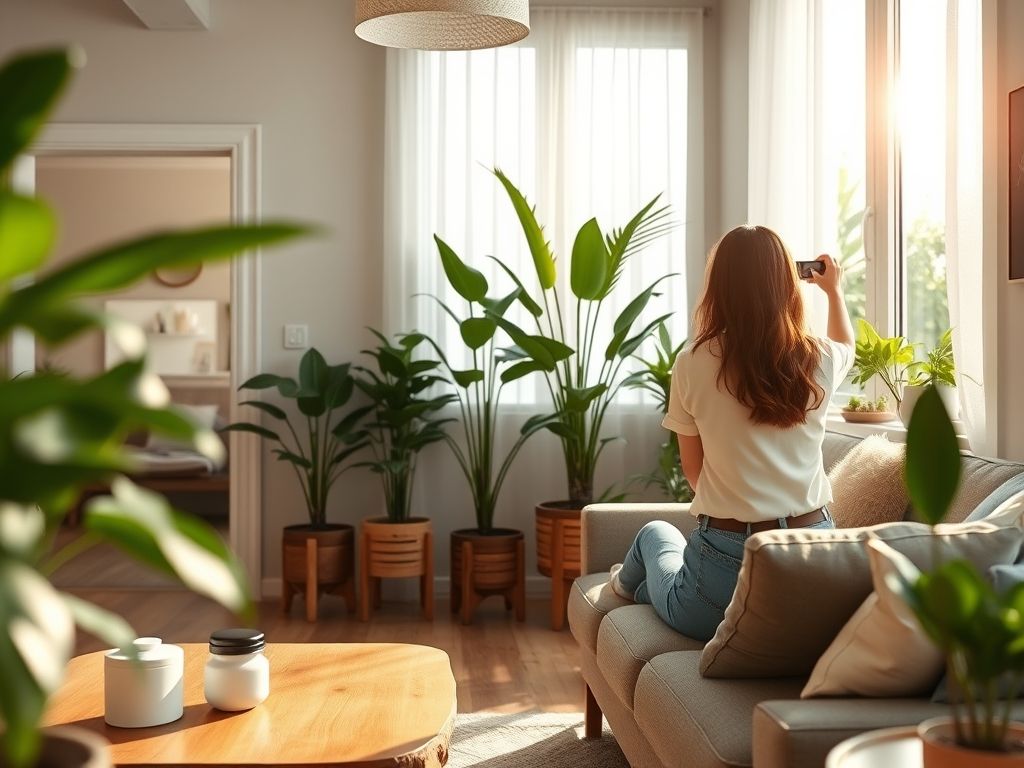In an era increasingly defined by environmental consciousness, transforming our homes into eco-friendly havens has never been more critical. The concept of a ‘green home lifestyle’ is no longer a niche trend but a mainstream movement, driven by a desire to reduce our carbon footprint, conserve resources, and create healthier living spaces. As we navigate the challenges of climate change and resource depletion, simple yet effective eco-habit hacks can make a significant difference. This blog post will explore essential green home tweaks that you can implement today to maximize your environmental impact and cultivate a sustainable lifestyle.
From energy-efficient upgrades and water conservation strategies to waste reduction techniques and eco-friendly product choices, we’ll delve into practical solutions that are both accessible and impactful. We’ll also be looking at how recent trends like ‘regenerative living’ are influencing home design and lifestyle choices. Get ready to discover how small changes can lead to big results, creating a greener, healthier, and more sustainable home for you and future generations.
Embrace Energy-Efficient Lighting
One of the easiest and most effective ways to reduce your home’s environmental impact is by switching to energy-efficient lighting. Traditional incandescent bulbs consume a significant amount of energy and have a short lifespan compared to modern alternatives. By replacing them with LED (Light Emitting Diode) bulbs, you can drastically reduce your energy consumption and lower your electricity bills. LED bulbs use up to 75% less energy and last up to 25 times longer than incandescent bulbs, making them a cost-effective and environmentally friendly choice.
Beyond simply switching to LED bulbs, consider implementing smart lighting solutions. Smart bulbs can be controlled remotely via your smartphone or voice assistant, allowing you to adjust brightness, set schedules, and even turn lights on or off when you’re away from home. This level of control can help you further optimize your energy usage and reduce unnecessary consumption. According to a recent report by the U.S. Department of Energy, widespread adoption of LED lighting could save the nation billions of dollars in energy costs annually and significantly reduce greenhouse gas emissions.
Furthermore, take advantage of natural light whenever possible. Open your curtains and blinds during the day to maximize the amount of sunlight entering your home. Position furniture strategically to avoid blocking natural light sources. You might also consider installing skylights or light tubes to bring natural light into darker areas of your home. By reducing your reliance on artificial lighting, you can create a brighter, more inviting living space while simultaneously reducing your energy consumption.
Conserve Water with Smart Fixtures
Water conservation is another crucial aspect of a green home lifestyle. With increasing water scarcity in many regions, it’s essential to adopt practices that minimize water usage in our homes. One of the most effective ways to conserve water is by installing smart fixtures, such as low-flow showerheads, faucets, and toilets. These fixtures are designed to use less water without sacrificing performance, helping you reduce your water consumption without compromising your comfort.
Low-flow showerheads, for example, use aerating technology to mix air with water, creating a satisfying shower experience while using significantly less water than traditional showerheads. Similarly, low-flow faucets are designed to restrict water flow without reducing water pressure. Dual-flush toilets offer two flushing options – one for liquid waste and one for solid waste – allowing you to use less water when flushing liquid waste. According to the Environmental Protection Agency (EPA), replacing old, inefficient fixtures with WaterSense-certified models can save a household thousands of gallons of water per year.
In addition to installing smart fixtures, be mindful of your water usage habits. Take shorter showers, turn off the faucet while brushing your teeth, and fix any leaks promptly. Collect rainwater in barrels for watering your garden or washing your car. Consider installing a greywater system to reuse water from your shower or washing machine for irrigation. By adopting these water-saving practices, you can significantly reduce your water footprint and contribute to a more sustainable future.
Reduce, Reuse, Recycle Waste Management
Effective waste management is a cornerstone of a green home lifestyle. The ‘reduce, reuse, recycle’ mantra is more relevant than ever in today’s world, where landfills are overflowing with waste and our planet is struggling to cope with pollution. By adopting a comprehensive waste management strategy, you can minimize your environmental impact and contribute to a circular economy.
Start by reducing your consumption of single-use plastics and disposable items. Opt for reusable shopping bags, water bottles, coffee cups, and food containers. Avoid products with excessive packaging and choose items made from recycled materials. When purchasing new products, consider their durability and longevity. Investing in high-quality, long-lasting items can help you reduce waste in the long run. As the mantra goes,
‘The greatest waste is that which we do not see.’
Next, focus on reusing items whenever possible. Get creative with repurposing old containers, furniture, and clothing. Turn old t-shirts into cleaning rags, use glass jars for storing food, and transform wooden pallets into garden furniture. By finding new uses for old items, you can reduce waste and save money. Finally, recycle materials properly. Familiarize yourself with your local recycling guidelines and sort your waste accordingly. Make sure to rinse and clean recyclable items before placing them in the recycling bin. Consider composting organic waste, such as food scraps and yard waste, to create nutrient-rich soil for your garden.

